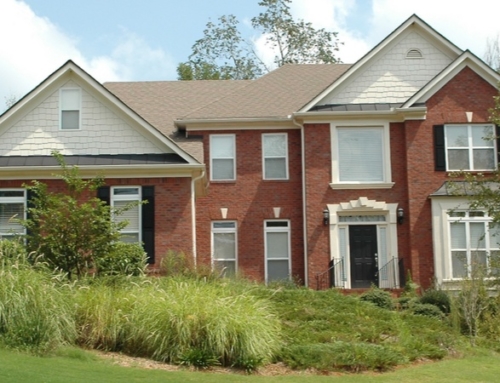In the past few years, hundreds of thousands of consumers bought condos, townhomes and single family houses as second homes or investments.
And with prices appreciating at double-digit rates in some areas, real estate investors are now wondering how they can pocket their profits without paying much – or anything – in the way of tax.
It’s easy for homeowners to shelter a significant amount of profits from the sale of a personal residence. The Internal Revenue Service allows homeowners who have lived in their home as a primary residence for two of the past five years to take up to $250,000 in profits (up to $500,000 if you’re married) tax free when they sell.
But when it comes to investment property, the rules are different. If you sell your investment property within a year of purchase, the profits will be treated as ordinary income and taxed at your marginal rate, capping out at 35 percent in 2006 plus any state tax owed.
If your own your investment property for at least a year, any profits you earn will be taxed at a maximum rate of 15 percent. But if you depreciated your property, you will have to capture that depreciation at a rate of 25 percent, according to Mark Luscomb, principal analyst with CCH (CCH.com), a tax publisher based in Riverwoods, Illinois.
But what if you don’t want to pay anything? Although you can’t keep your profits tax-free, there is a neat way to defer any tax you may owe on the property by using a 1031 tax-free exchange, also known as a Starker Trust.
A 1031 tax free exchange allows you to swap one investment property for another “like-kind” investment that costs at least as much as the property you are selling, according to Scott Nathanson, a senior vice president and Midwest manager for Nationwide Exchange Services (Nationwide1031.com), a leading provider of 1031 tax free exchange products and services.
In addition to purchasing another investment property, all the equity received from the sale of the relinquished property must be used to acquire the replacement property.
When you use a 1031 tax free exchange, you can defer any taxes owed on the profits you’ve earned in the sale of your current investment property. You can continue to do 1031 exchanges through the rest of your life, as long as the tax laws haven’t changed. When you die, the property will be valued at its current market value, and your heirs will inherit your property at its stepped-up basis.
Completing a 1031 exchange isn’t difficult, but there are specific rules that must be followed in order to avoid running afoul of IRS rules.
First, you must identify the property you are going to purchase in the exchange within 45 days of selling your current property. You have to close on the purchase of the replacement property within 180 days, or a shorter time period in certain circumstances. There is no flexibility written into the rules and no extensions are available. So if you blow the deadline, you blow your 1031.
In the past few years, the IRS noticed that many real estate investors had been buying homes as an investment and then converting them into personal residences.
That’s a smart move, says Nathanson, because after a period of time, the homeowner can sell the property and pocket up to $500,000 in capital gains tax free, although any depreciation that had been taken when the property was still being used as an investment would have to be recaptured.
But the IRS hadn’t determined how long you had to hold onto the investment property before you converted it to personal use.
As part of the Gulf Coast Opportunity Zone Act of 2005, the IRS decided that real estate investors who bought an investment house and later converted it to personal use had to wait a full five years before being able to take up to $500,000 in profits tax-free.
“The IRS was becoming concerned that people were taking investment property in which they had substantial appreciation and were doing a like-kind exchange into a personal residence. Then, they were using that property as a personal residence for 2 years and selling it and obtaining the exclusion on capital gains tax that’s available on the sale of a personal residence,” Luscbombe explained.
Now, real estate investors who convert their investment property to their personal residence will have to wait five years from the date the property was purchased as part of the 1031 exchange. However, the investor only has to live in the property for two of the five years, and can rent out the house during the other three years.
“Now you have to own your property for five years, no matter what,” said Nathanson. “If you sell a two-flat and buy a house in Florida as part of a 1031 exchange, you have to rent it out for two years to be safe, and then you can either live there from years 2 to 5 or rent it out for part of that time. But you’re stuck with the house if you want to be able to sell it and keep your profits tax free.”
The two-year period is considered to be “safe harbor” by many real estate attorneys and tax professionals. If you sell the investment property or trade it for another investment property within two years, you may have to prove that you had the “intent” to use it as an investment when you completed the original 1031 exchange.
Just don’t think you’re going to fool the IRS.
“Intent is a very important part of a 1031 exchange,” explained Nathanson, who is also a real estate attorney. “If you’re exchanging one real estate investment for another, you have to have the intent of keeping it as an investment when you close on the property.”
“There was a case where a real estate agent bought an apartment building and then carved them up into condos and sold them within the first year after buying the building. The IRS said the agent was acting more like a dealer rather than an investor. The agent defended himself by saying he had the intent of renting out the units, but the condo market was too good,” Nathanson recalled.
“But the IRS investigator went into the MLS records and found that the agent was marketing the condos for sale even before purchasing the building,” he added. That sort of squashed the “intention to rent” theory.
Published: Jan. 16, 2006






Leave A Comment